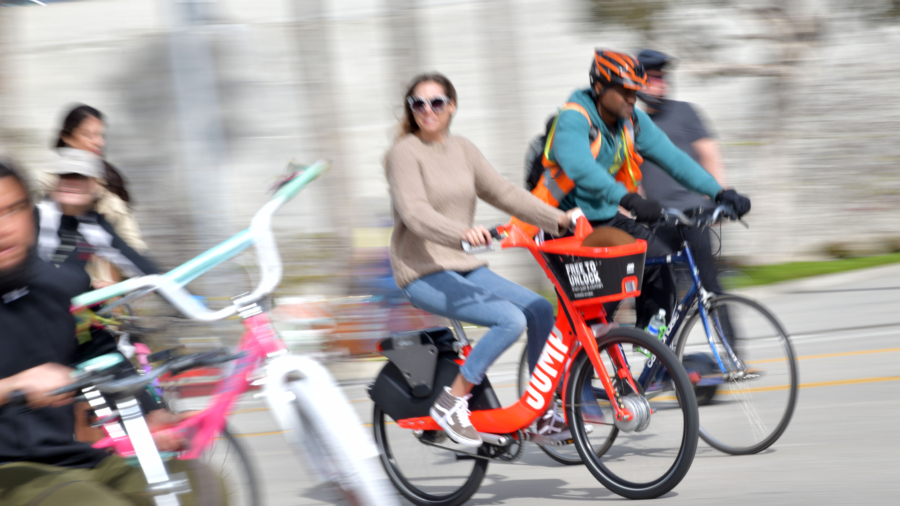As more Americans shift from traditional bicycles to e-bikes and powered scooters, the number of injuries from these electric-powered wheeled devices jumped over three years, according to a new study.
Researchers from Columbia University’s Mailman School of Public Health found a 293 percent increase in e-bike injuries and an 88 percent rise in powered scooter injuries between 2019 and 2022.
Published in the American Journal of Public Health, their study analyzed data from the National Electronic Injury Surveillance System (NEISS), which samples 96 U.S. hospitals with emergency departments.
Out of nearly 49 million injuries resulting in emergency department visits, researchers identified approximately 1.9 million injuries associated with micromobility devices, including e-bikes, bicycles, hoverboards, and powered scooters.
Dr. Kathryn Burford, the study’s lead author, said the study findings show a need for strategies to improve the safety of the devices, especially in the cities where they are commonly used.
“Understanding injury patterns and risk factors can inform policies to promote safer use of these devices,” Burford said in a press release announcing the research.
The research found that traditional bicycles accounted for most injuries, with 33.2 per 1,000 emergency department visits. Powered scooters followed at 3.4 per 1,000, while e-bikes and hoverboards represented 1.2 and 1.8 per 1,000 visits, respectively.
Researchers also studied the number of injuries per device versus the age of patients. Hoverboard injuries were found to be mostly among youth, accounting for 76 percent among those aged younger than 18 years. Adults between the ages of 18 to 44 were mostly injured on powered scooters and e-bikes, accounting for 57 percent and 49 percent of all injuries, respectively.
The study highlighted trends in alcohol use and helmet-wearing. Powered scooter injuries showed the highest amount of alcohol involvement, followed closely by e-bike-related injuries.
For helmet usage, which occurred in about 20 percent of cases, people on bicycles and e-bikes were more likely to wear helmets compared to those on scooters or hoverboards.
Dr. Andrew Rundle, a senior author of the study, said a lack of safety regulations could be contributing to the rise in injuries.
“The considerable increase in electric micromobility injuries we are experiencing may be attributable to the lack of access, education, and regulation for protective equipment,” Rundle said.
One example he pointed to was New York City’s Citi Bike program, a bike-sharing program operated by Lyft, which isn’t required to provide helmets.
In a previous paper published by Rundle and Burford, the researchers said legislation related to the safe use of such micromobility devices is inconsistent and needs to be addressed.
“Legislation is lacking on where micromobility devices can be ridden and legislation regulating the riding of these devices while under the influence of alcohol or other recreational drugs is inconsistent and historically difficult to pass,” Burford said.
The researchers have called for improved legislation regarding where micromobility devices can be used and stricter regulations on riding under the influence. They also suggest that enhancing infrastructure, such as protected bike lanes in high-traffic areas, could be a quicker solution for improving safety.

